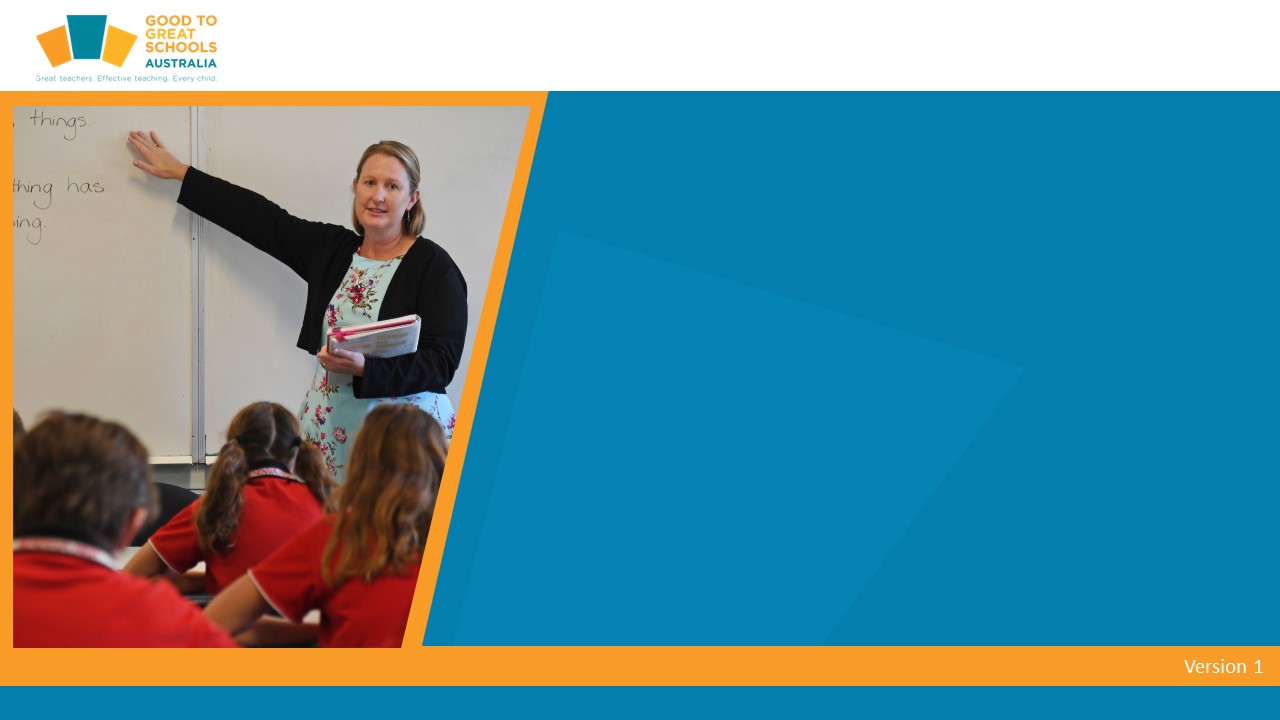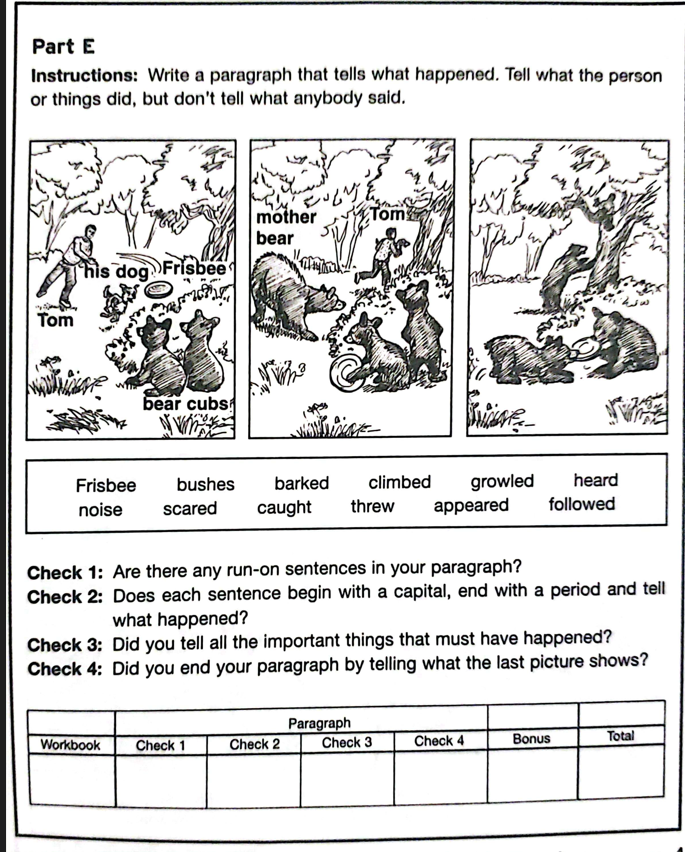Back to Course
Teach Expressive Writing
0% Complete
0/0 Steps
-
Module Introduction5 Topics
-
Overview17 Topics|2 Tests
-
Cover
-
Lesson Objective
-
Opening the Lesson
-
Professional Learning Standards, Techniques, and Practices
-
Direct Instruction Overview
-
Expressive Writing 1–2 Programs Features
-
Expressive Writing 1-2 Skill Development
-
Video: Presenting a Direct Instruction Lesson
-
The Students and Program Structure
-
Check Your Understanding
-
Expressive Writing Teacher and Student Materials
-
Teacher’s Guide
-
Expressive Writing and Student Success
-
What is Good Writing?
-
Test Your Understanding
-
Review
-
Lesson Completed
-
Cover
-
Instructional Design of Expressive Writing20 Topics|2 Tests
-
Cover
-
Lesson Objective
-
Opening the Lesson
-
Professional Learning Standards, Techniques, and Practices
-
Instructional Design Overview
-
Explicit Teaching Strategies
-
Track Design
-
Passage Writing
-
Video: Using Track Design
-
Picture Comprehension and Sequences
-
Editing
-
Four-step Procedure for Introducing New Content
-
Video: Expressive Writing Lesson 8 Exercises 3–4
-
Teaching Sentence Variety
-
Simple Past Tense
-
No Grammatical Terms
-
Check Your Understanding
-
Test Your Understanding
-
Review
-
Lesson Completed
-
Cover
-
Setting Up for Success22 Topics|3 Tests
-
Cover
-
Lesson Objective
-
Opening the Lesson
-
Professional Learning Standards, Techniques, and Practices
-
Placement Test Overview
-
Placement Test Direction
-
Placement Test Scoring Criteria
-
Grouping Students for Instruction
-
Video: Placement Test
-
Classroom Arrangement
-
Check Your Understanding
-
Lesson Script
-
Signals
-
Pacing
-
Video: Pacing and Signals
-
Error and Correction Procedure
-
Video
-
Check Your Understanding
-
Teaching to Mastery
-
Test Your Understanding
-
Review
-
Lesson Completed!
-
Cover
-
Lessons and Tracks in Expressive Writing 115 Topics|2 Tests
-
Cover
-
Lesson Objective
-
Opening the Lesson
-
Professional Learning Standards, Techniques and Practices
-
Introduction to Skill Tracks in Expressive Writing 1
-
Important Formats in Lessons
-
Important Formats in Lessons Continued
-
Check Your Understanding
-
Writing Techniques for Presenting Introductory Writing Steps
-
Scenario of Teacher Using Writing Techniques
-
Building Skills for Paragraph Writing
-
Video: Teaching Lesson 31 in Expressive Writing 1
-
Test Your Understanding
-
Review
-
Lesson Completed!
-
Cover
-
Lessons and Tracks in Expressive Writing 215 Topics|2 Tests
-
Cover
-
Lesson Objective
-
Opening the Lesson
-
Professional Learning Standards, Techniques and Practices
-
Expressive Writing 2 Pre-program Lessons
-
Introduction to Skill Tracks in Expressive Writing 2
-
Important Formats in Lessons
-
Passage Writing Activities
-
Check Your Understanding
-
Active Monitoring During Writing Assignments
-
Video 9: Active Monitoring
-
Sample Passage After Active Monitoring
-
Test Your Understanding
-
Review
-
Lesson Completed!
-
Cover
-
Passage Writing Activities15 Topics|2 Tests
-
Cover
-
Lesson Objective
-
Opening the Lesson
-
Professional Learning Standards, Techniques, and Practices
-
Basic Rules to Follow as Students Write Passages
-
Basic Rules to Follow as Students Read Passages
-
Basic Rules to Follow as Students Read Passages Continued
-
Check Your Understanding
-
Students Check Their Writing
-
Basic Rules to Follow as Students Check Their Writing
-
Video: 10-Teaching Writing Assignments
-
Responding to Specific Problems
-
Test Your Understanding
-
Review
-
Lesson Completed!
-
Cover
-
Independent Work, Point System and Marking Papers16 Topics|2 Tests
-
Cover
-
Lesson Objective
-
Opening the Lesson
-
Professional Learning Standards, Techniques and Practices
-
Marking Papers
-
Procedures for Marking Student Papers
-
Independent Work
-
Video: Monitoring Independent Work Video
-
Point System for Expressive Writing 2
-
Awarding Points for Workbook Skills and Passage Writing
-
Check Your Understanding
-
Awarding Extra Bonus Points
-
How to Create Student Interest in the Point System
-
Test Your Understanding
-
Review
-
Lesson Completed!
-
Cover
-
Mastery Tests and Point System15 Topics|2 Tests
-
Cover
-
Lesson Objective
-
Opening the Lesson
-
Professional Learning Standards, Techniques, and Practices
-
What are Mastery Tests?
-
Mastery Test Procedures
-
Mastery Test Procedures Continued
-
Check Your Understanding
-
Remediating Students
-
Video 12 – Remediating Students
-
Tips for Developing Better Writers
-
Developing Better Writers: Scenario
-
Test Your Understanding
-
Review
-
Lesson Completed!
-
Cover
-
Motivating Students16 Topics|2 Tests
-
Cover
-
Lesson Objective
-
Opening the Lesson
-
Professional Learning Standards, Techniques, and Practices
-
Effective Teaching and Student Success
-
Teach and Embed Behavioural and Expectations
-
Setting Expectations – STAR Rules
-
Teacher–Student Game
-
Check Your Understanding
-
Specific Praise and Affirmations
-
Video 13 – Examples of the Teacher–Student Game and Reinforcement
-
Positive Techniques Scenario
-
Video 14 – Recognising Student Achievement
-
Test Your Understanding
-
Review
-
Lesson Completed!
-
Cover
-
Teaching a Lesson in Expressive Writing 117 Topics|2 Tests
-
Cover
-
Lesson Objective
-
Opening the Lesson
-
Professional Learning Standards, Techniques, and Practices
-
Review of Teaching Techniques
-
Signals Used in Lesson 8
-
Expressive Writing 1, Lesson 8, Exercise 3
-
Video 15: Group Work Check for Lesson 8, Exercise 3
-
Presenting Questions in Lesson 8, Exercise 4
-
Error Correction Review
-
Scenario: Correcting Errors in Lesson 8, Exercise 4
-
Video 16: Lesson 8, Exercise 4 With Error Correction
-
Check Your Understanding
-
Monitoring and Scanning Students – Lesson 8, Exercise 5
-
Test Your Understanding
-
Review
-
Lesson Completed!
-
Cover
-
Module Completion Survey1 Topic
Lesson 3,
Topic 10
In Progress
Picture Comprehension and Sequences
ddewell@goodtogreatschools.org.au February 17, 2024
Lesson Progress
0% Complete

Picture Comprehension and Sequences
The Expressive Writing 1–2 instructional design includes the use of pictures and picture sequences to build writing skills. These pictures and picture sequences are carefully designed in the Expressive Writing exercises to help students have a concrete referent to write about.
The advantages of having concrete picture referent:
- Students can report and express exactly what is in the pictures.
- Teachers can correct errors in picture descriptions more efficiently.
- Students only use the provided vocabulary to describe the pictures, enabling them to learn the vocabulary more efficiently.
- Students learn to write simple declarative sentences by naming something in the pictures and then describing it more.
- Students are helped to make inferences based on evidence from the pictures.


